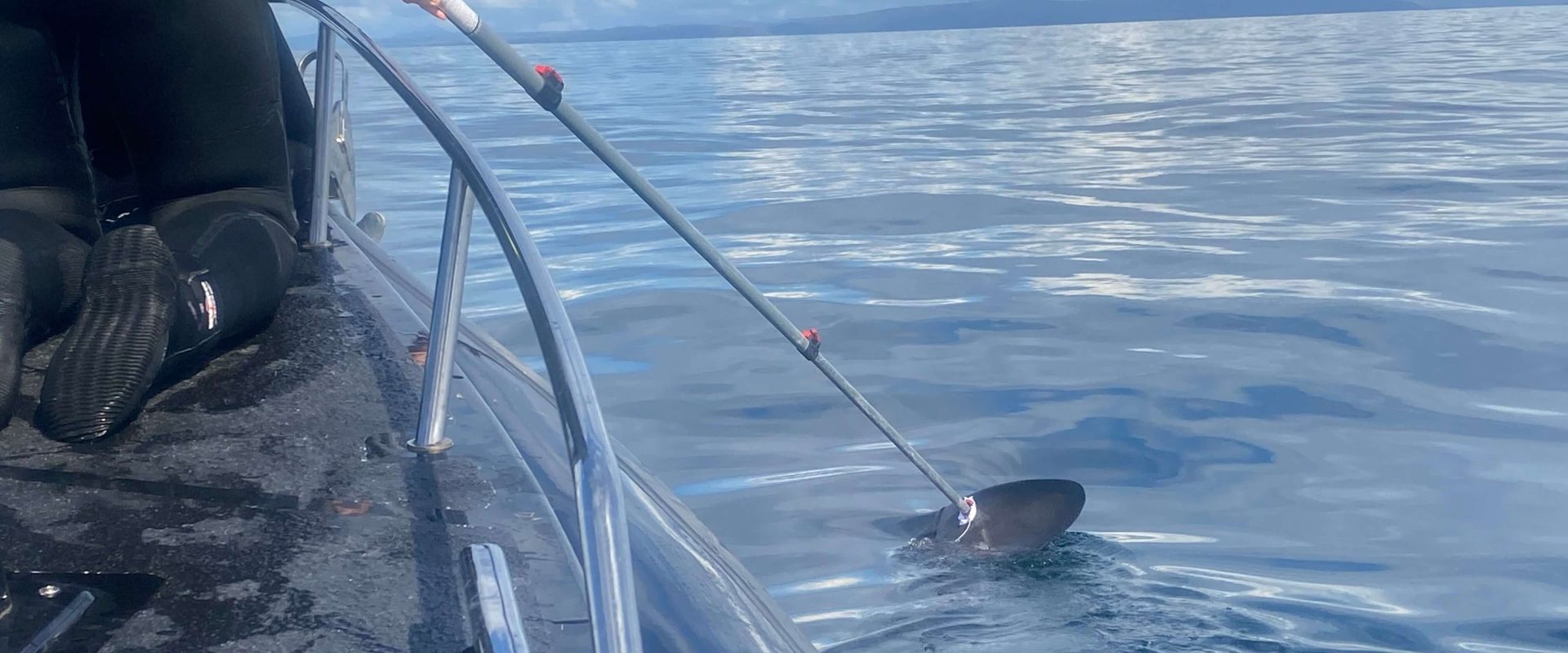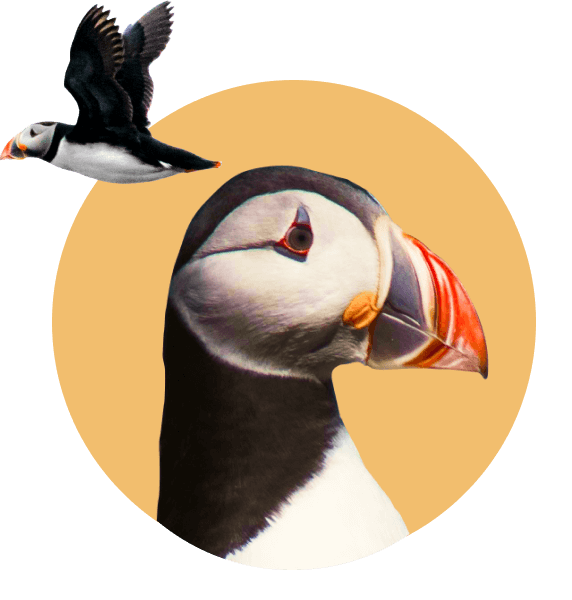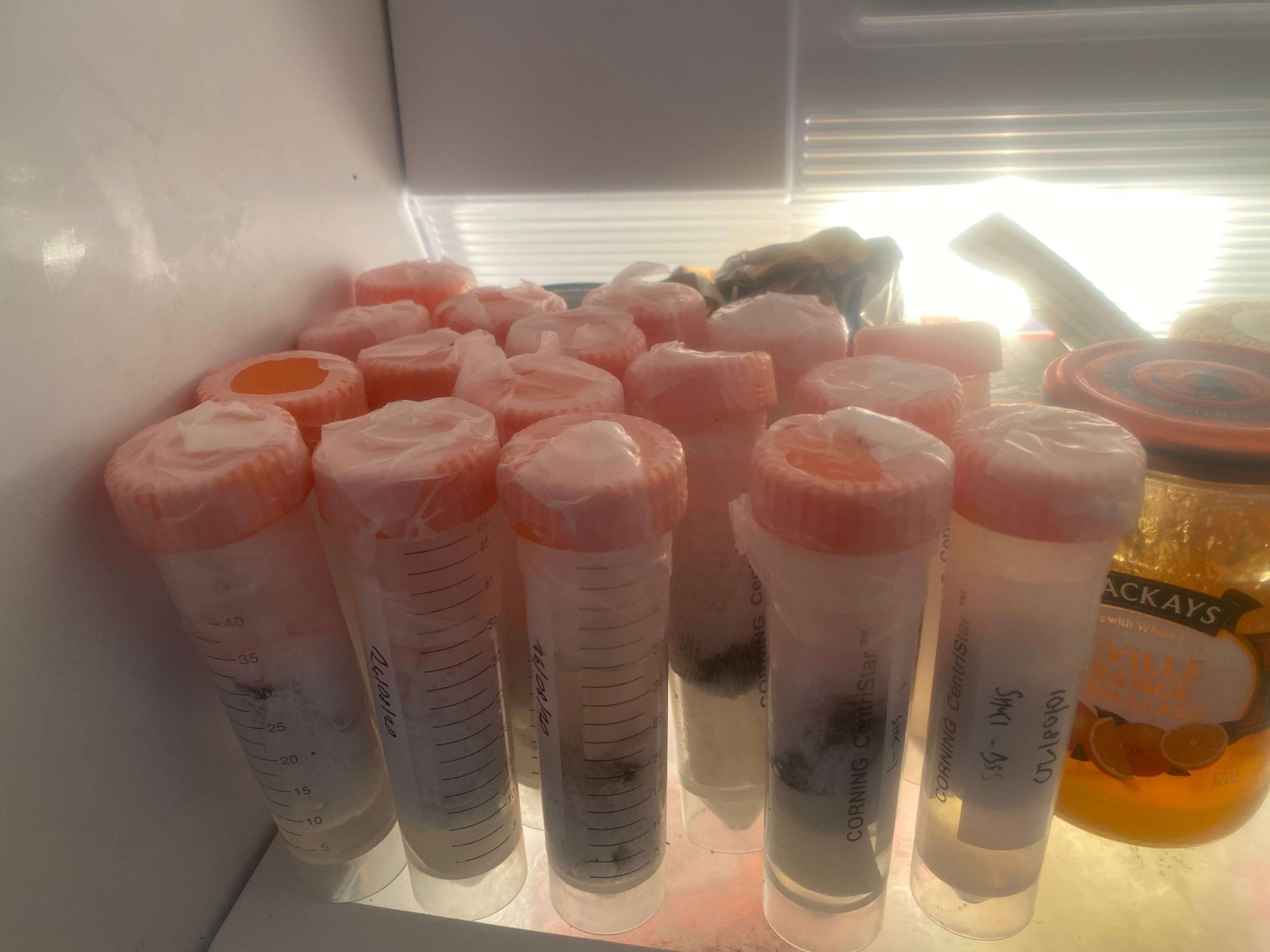
Learn about Basking Shark Slime with Professor Les Noble
Jan 11 2023

Welcome back to episode 9 of Shark-cast, the podcast all about basking sharks! This episode we were joined by an exciting guest, Professor Les Noble. To start the episode we asked Les to introduce himself and his research.
“I’m a professor of Aquatic biosciences at Nord University, which is about 100km north of the arctic circle. When you look at a map and see Tromsø, we are just a bit below there, right on the coast which is great, because every morning when I wake up I get to look at the Lofoten Islands. It keeps my mind occupied and focused on the marine environment! I regularly see whales going past my house while I’m having breakfast in the morning.”
Shane knows Les as we have been collecting shark slime for his research, and it has uncovered some exciting developments in our knowledge on basking sharks.
We asked Les how he got involved in basking shark genetics to begin with:
“That’s a good question – I guess what it was, I remember many years ago now, before 2000. I had given what I thought was a really stunningly interesting lecture on the genetics of snails and geneticists, which I am, really like snails because they don’t move very much! A student came up to me, a young guy named Michael Scholl, who went on to become the director of Save Our Seas Foundation, why are you wasting your time working on these things, couldn’t you use the same techniques on sharks? So I said to him, you get me the samples and I’ll start working on them! Thats how I got my first tissue samples on great white sharks, and this unhealthy obsession with large marine animals brought me on to basking sharks!
David Sims and I put a plan together for how we would get samples from basking sharks. As we use molecular techniques, we only need very tiny pieces of tissue to extract DNA from. Originally we were going to shoot harpoons through the dorsal fins of basking sharks to attach satellite tags, this would collect enough tissue for us to work on. But this practice would often cause the sharks to dive – and you loose the potential to collect other samples. We spoke to a guy called Simon Berrow, at Galway University, Simon was putting roto tags on to sharks and getting small pieces of material from them. One shark was being very tricky and it’s tail swiped across Simon’s RIB, and left this slime across the front of the hull – which he collected!”
Other researchers at the University were extracting DNA from tissue samples, and Les asked them if they could find DNA from the mucus. Surprisingly a lot of DNA was found!
“We can then use these techniques to find out how closely related sharks in a group are to each other. Now the technique has developed to just using a pole to touch the fin with a sample collecting cloth, which doesn’t disturb the sharks.
One of my PhD students Lily Lieber, now at Queens University Belfast, worked very hard to collect some of the first slime samples from these sharks. We found that groups of sharks together actually were made up of closely related individuals. Individuals that are together are more closely related to each other than they are to other groups. This leads us to all sorts of questions; are they led by older family members, such as a matriarch which know the routes and lead migrations. The males in these pods are less closely related to the females, which makes the matriarch theory most likely.”
We spoke about the new torus research, and wondered if there had been any studies on how closely related the individuals which form the aggregations are?
“Being confined mostly to the lab, information about behaviour in the field is always a huge help. These mating torus will be really interesting to look at.” You can read more about the shark torus behaviour here.
“In terms of location we also found the same individuals will sometimes turn up in the same area each year. It seems the sharks can make use of the knowledge of where plankton blooms, and use this as a feeding advantage. So climate change could have real repercussions for not only their survival but also their reproductive abilities, if the locations of these blooms change.
They are also vulnerable to local threats such as historic fishing. “We have found that these populations are genetically distinct, and the pods are made up of distant relatives. Hunting will have had a big impact on genetic variation, as closely related individuals would have been wiped out. On the west coast of North America, there was a bounty for basking sharks as they were getting caught in fishing nets, and now there are little to no basking sharks in that area. This reflects what we have been finding in our research. In Norway too, a lot of hunting, no basking sharks, Canada – the same.’
We asked Les, did you ever get any samples from the Southern Hemisphere, it would be interesting to see how different they are?
“Malcolm Francis sent us some samples, its an interesting story as it almost created a diplomatic incident! These days you have to be very careful when dealing with CITES listed animals, you need to have all the forms in order, Malcolm had accidentally put the labels in the box instead of outside. Unfortunately they were impounded, and they threatened to destroy them! In the end the New Zealand embassy had to get involved and they were released within 24 hours!
They confirmed that there was genetic variations in different regions. We don’t have sufficient samples from around the globe to understand the genetic variation in the global population. Our techniques have developed a lot further since then too!”
We have tried the new techniques! Which have developed from using a pole, to just ‘wafting’ a cloth near the shark. The refinement has become so precise that we don’t have to touch the shark at all!
“Yes, you can collect a lot of data from a waft. Another thing we are looking at is also the health of the animal, as we also have bacterial samples from the slime too. The more molecular aspects of conservation biology can look further in to the health of individuals and a population.”
Shane – We’ve noticed a different change in the pattern in the last couple of years – whether it is down to the La Nina, or different planktonic conditions. We’ve had very precise timings in the past with basking shark sightings, which have changed in the last couple of years, and lots of sharks have arrived at a different area which opens up a lot of questions.
“Getting more slime samples would help us better understand the population and how they are using the oceans, and how they are coping with changes in plankton blooms and such a like.”
We noted that it is well known that Calanus copopods are moving northwards due to increasing sea temperatures. Combining these studies on genetics and changing sea conditions would be very interesting.
It is fascinating how much we can find out from slime, and how our perceptions have recently changed, as we didn’t previously consider basking sharks a social species. But the new research about their aggregations and the fact that they travel in almost family units seem to suggest they may have more complex social behaviour than we may have thought.
“We don’t see sharks at the surface as much as we do marine mammals, which have given us this perception that they are lone wolves. One point is they have extraordinarily good olfactory senses, and they can smell the chemicals from the plankton and also potentially other individuals.
Individuals smell quite different – and a lot of animals choose mates based on olfactory cues (ourselves included!). This may also be how they follow their relatives on migratory routes.”
We really enjoyed being part of the slime sampling, and our guests loved naming the sharks too! They got involved in our data collection, and within a couple of days we started recognising the same individuals, its funny how giving something a name makes it easier to recognise!
Les hopes that somewhere there is a basking shark named Les, tune in to hear some of our funniest names selected by our guests for basking sharks we encountered in our 2020 season!
We are really grateful for Les giving up some of his time to speak to us, check out the podcast here.
You can read more about Les Nobles research in his papers here:
https://cites.org/sites/default/files/common/com/ac/22/E22i-09.pdf





